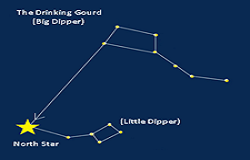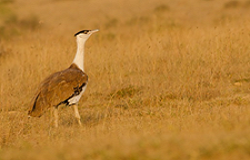|
Art and Culture
World’s first living heritage university

|
Visva-Bharati University is going to get the ‘heritage’ tag from UNESCO to take the distinction of world’s first living heritage university.
About:
- It was founded by Rabindranath Tagore in 1921.
- It was named after Nobel Laureate Rabindranath Tagore until Visva-Bharati Society was registered as an organisation in May 1922.
- Until Independence, it was a college and the institution was given the status of Central University in 1951 through a central Act.
- Its first vice-chancellor was Rathindranath Tagore, the son of Rabindranath Tagore, and the second vice-chancellor was grandfather of another Nobel Laureate economist Amartya Sen.
Significance:
- In 1922, Visva-Bharati was inaugurated as a Centre for Culture with exploration into the arts, language, humanities, music.
- It also served as institutes for Hindi studies (Hindi Bhavan), Sino-Asian studies (Cheena Bhavan), centre for humanities (Vidya Bhavan), institute of fine arts (Kala Bhavan), and music (Sangit Bhavan).
|
|
Art and Culture
Veteran singer Vani Jairam died

|
Veteran playback singer Vani Jairam, who sang over 10,000 songs across several Indian languages, died at 77.
About:
- Born on November 30, 1945 in Vellore.
- She was trained as Carnatic music and later learnt Hindustani classical music as well.
- The singer had lent her voice to several songs across 19 languages which included Tamil, Hindi, Telugu, Malayalam, Marathi, Odiya and Bengali.
- Her big break in films came with the Hindi film Guddi in 1971, where she sang three songs for composer Vasant Desai.
- Famous versions: Hum ko mann ki shakthi dena
Awards and Achievements:
- She also received the National Award thrice .
- The Government of India, last month, announced that Jairam, who completed 50 years as a playback singer in 2021, would receive the Padma Bhushan award, the third-highest civilian award, for her contribution to music.
|
|
Science and Technology
North star and significance

|
The Vice President and Rajya Sabha Chairman Jagdeep Dhankhar during the Parliament’s sitting stated that Parliament is the “north star” of democracy.
About North Star:
- ‘Polaris’, also known as the North Star or the Pole Star, is a very bright star (around 2500 times more luminous than our sun) placed less than 1° away from the north celestial pole.
- Its position and brightness have made humans use it for navigation since late antiquity.
- It is a part of the constellation ‘Ursa Minor’ and is around 323 light-years away from Earth.
- Polaris seems to have been first charted by the Roman mathematician and astronomer Ptolemy, who lived from about 85 to 165 B.C.
- While there does exist some evidence pointing at how the star was used for navigation in late antiquity, it is during the ‘Age of Exploration’ that it becomes such a central part of human history.
Does the Northern Star “change”?
- However, during the reign of Julius Caesar (46-44 BC), there was no constant North Star.
- This is due to the fact that the northern celestial pole changes over time.
- If you picture a line connecting Earth’s North and South Poles as the axis around which Earth rotates, that axis is slowly moving in its own circle.
- By the end of the 21st century, the celestial pole will move away from the Polaris – humans will need to identify a new ‘North Star’.
|
|
Environment
Great Indian Bustard

|
Despite a Supreme Court order directing that low-voltage power lines go underground, no significant steps has been taken by power companies and State governments to comply with guidelines to save Indian bustard, according to the report.
About:
- The Great Indian Bustard (Ardeotis nigriceps), is a bustard native to the Indian subcontinent. Bustards are large terrestrial birds found in dry grasslands and steppe regions.
- It is also known as the Indian Bustard; it is among the heaviest flying birds in existence.
- It is the State bird of Rajasthan and is considered India’s most critically endangered bird.
- It is considered the flagship grassland species, representing the health of the grassland ecology.
- The GIB is now found in a small number only in western Rajasthan, while Gujarat claims to have a few females left in its Banni Grassland Reserve.
- Population: As per the last count of the GIB in 2018, there were around 127 birds in the Desert National Park or the DNP in Rajasthan.
Protection Status:
- International Union for Conservation of Nature Red List: Critically Endangered
- Convention on International Trade in Endangered Species of Wild Fauna and Flora (CITES): Appendix I
- Convention on Migratory Species (CMS): Appendix I
- Wildlife (Protection) Act, 1972: Schedule 1
|







